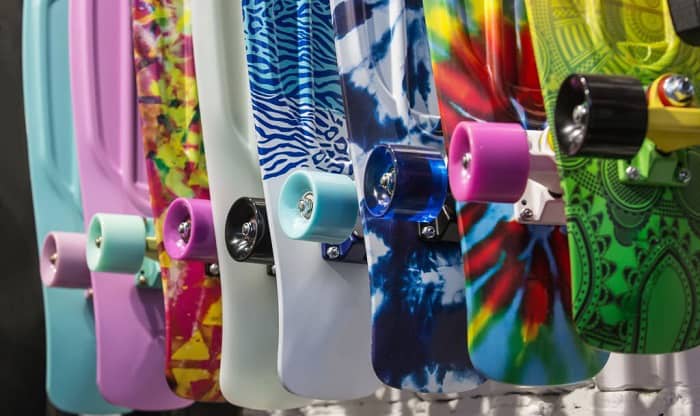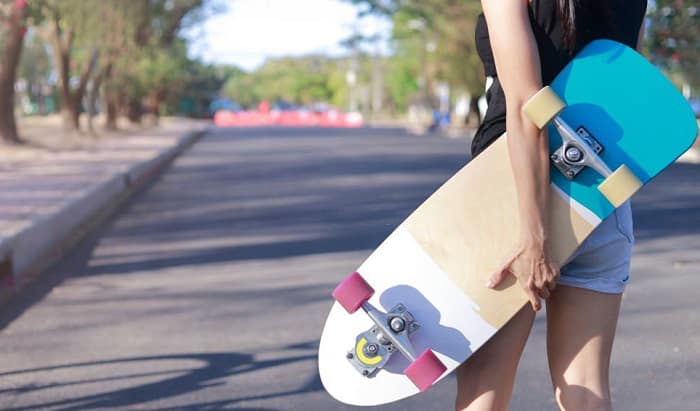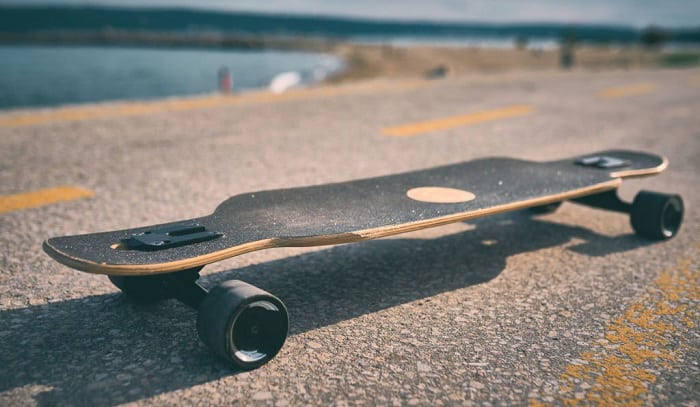One of the most salient distinguishing factors of skateboard decks is their size and cut. There are popsicle boards for the streets and parks, and there are longboards suited for downhill skating.
Aside from the shape, it’s important to know your deck’s concavity, which affects the skateboard’s overall performance.
So today, let’s compare the mellow VS steep deck concave. Here, we’ll see the advantages of each concave skateboard deck and what will suit your needs as a skater.
Table of Contents
Differences Between Steep Concave Vs Mellow Skateboard Deck
What makes a mellow deck in demand? How does a steep board improve a skate ride? A concave skateboard chart doesn’t have this kind of information. Worry not! Learn about these boards below.
1. What are they?
As mentioned, some skate decks fit the streets and tricks in skate parks. And these boards belong to the mellow and steep concavity classes.
Mellow or medium concave decks have a curve to accommodate the feet, making them easy to catch. In a range from flat to deep concave skateboards, this type belongs in the middle, not too steep or too plane.
At both ends of the deck, mellow skateboards have kicktails. These parts assist the skater in doing tricks better with more mobility.
On the other hand, steep decks promote better maneuverability, especially when turning. This aspect is possible because of the locked feeling of the board’s curved shape.
For the kicktails, this variant’s board ends have a more angled profile. Such a feature makes the skateboard more poppy and suitable for learning flip tricks.
2. Advantages
Mellow concave decks work best for the ramps and streets. Here’s what we can enjoy from them.
Steep concave decks also have their share of pros.
3. Disadvantages
While mellow concave skateboard decks improve trick performance, we should also be mindful of these downsides.
Meanwhile, a steep concave skateboard may not be the best for everyone for the following reasons.
4. Cost
Perhaps, the skateboard’s concavity is not a top consideration of many manufacturers when pricing skateboards.
But here’s a short mellow board price list.
- Element Timber Late Bloomers Wolf – $69.99
- Creature Logo Outline Stumps – $79.99
- Santa Cruz Stranger Things Season 2 – $89.99
For steep or high concave skate decks, you can check out the following models from steep concave deck brands.
- Almost Red Head – $59.99
- Enjoi Rainbow Fart – $64.99
- Baker steep concave T-Funk – $89.36
Frequently Asked Questions
What is skateboard concave?
What is concave on a skateboard? Pick up a board and look at it from the nose to the tail with the grip tape side up.
Hold the deck at eye level, and you will see the longitudinal curvature of the board. That is the skateboard concave.
If you pick another board and check it the same way as the previous one, you might notice differences in the angles of the two. That is where deck concavity varies with flat, mellow, and steep designs.
Is concave good on a skateboard?
A mellow or steep concave on skateboards yields more good than bad for a skater. Depending on the curvature levels, the skater can maneuver the board better or perform tricks on it.
While not all brands highlight concavity in their flagship models, knowing about this attribute can enhance your selection process.
Should beginners worry about concave?
Like most Reddit skaters say, worry about the skateboard’s concavity only after learning the sport’s basics. The same applies to other technicalities of a deck.
What’s more necessary here is that the skater gets to try out various boards. That way, he can distinguish between a flat VS concave skateboard and know which one suits him.
Nose and tail
If you just got your first board, you may wonder which part is the nose and which one is the tail. After all, the concavity is shown in these two parts. So, how do we identify the board’s nose and tail?
The deck’s nose has a broader and steeper profile than the tail. On the other hand, the tail part of the skateboard has a shorter form, which helps improve the pop.
Compared to the nose, this rear part has sub-variants. Let’s get to know the tail more through the following.
- Double kicktail – Double kicks are the most versatile boards sold in many skate shops. What’s good about this type is the user can flip the skateboard from either end with the help of the upward-sloped nose and tail.
- Single kick – Remove one sloping edge from the deck, and we have a single kicktail board. Perhaps, this type is the best example to use when identifying noses and tails.
In this deck, the flat part is the nose, which has no kick, and the angled end at the back is the tail.
- No kick – Finally, if we flatten both ends of the deck, we’ll have a “no kick” skateboard. These boards or cruisers, as many call them, may not be as common as those used for tricks. But this type remains helpful when having short commutes.
Conclusion
What seems to be a small detail can deliver exceptional impact. In skateboarding, a minor difference in deck size, shape, or concavity can make you skate better or worse.
Thus, when choosing boards, try to get into the details carefully, even those not highlighted by some manufacturers. That way, you can expect the kind of ride you want.
So, which one to use between mellow VS steep deck concave? The latter will help you perform tricks better, while the former lets you cruise with more control. Always remember, both types have drawbacks, so consider your preferences.

Hi, I am Charles Harris. I opened this site to write as much as I can about my biggest passion – skateboarding!
I started as a clumsy yet passionate rookie 10 years ago to now a still passionate yet much better skateboarder! But I have to tell you, the whole journey has always been fun and rewarding, indeed not without hardship.




